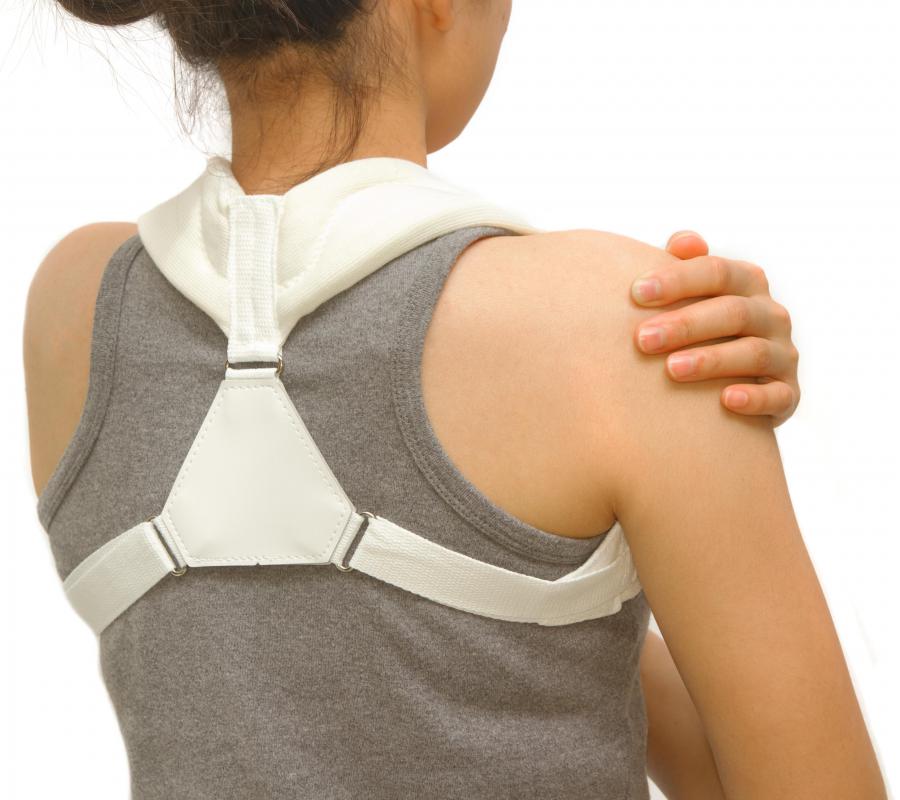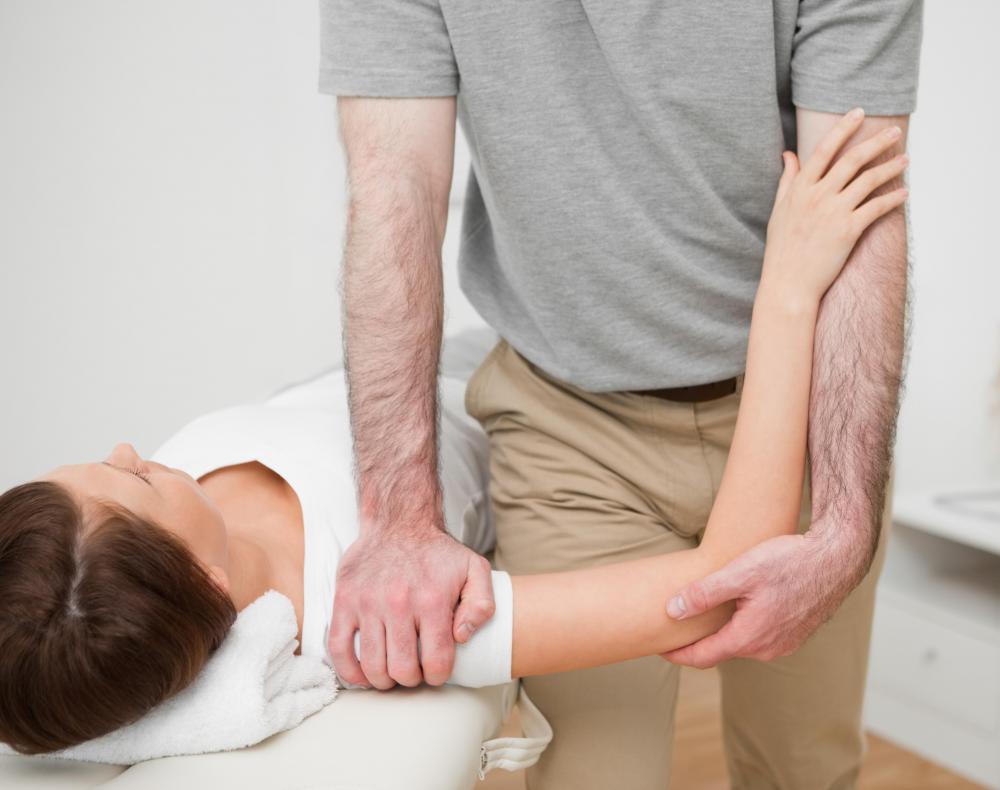At TheHealthBoard, we're committed to delivering accurate, trustworthy information. Our expert-authored content is rigorously fact-checked and sourced from credible authorities. Discover how we uphold the highest standards in providing you with reliable knowledge.
What is the Clavicle?
The clavicle or collarbone is a bone found in the bodies of humans and other animals with grasping forelimbs. It provides a point of articulation for both the shoulderblade and the humerus, the long bone in the upper arm. As it lies close to the surface of the body, the clavicle is often visible, especially in people with minimal fat, as a raised ridge on the upper chest.
There are two clavicles, one on either side of the body. The bone is s-shaped, articulating with the scapula on one end and the sternum on the other. As part of the shoulder girdle, the joint that includes the scapula and humerus, it is the only bony attachment for the arm. It plays a critical role in the movements of the upper arm, moving with the shoulder blade to accommodate a wide range of motion.

This bone is the first to start developing during embryonic development, with ossification beginning very early in a pregnancy. It also happens to be one of the last bones to fully finish forming. The clavicle is still developing until people reach an age of around 25 and people can actually influence the development of this bone with certain types of exercises. People who do a lot of shoulder strengthening will have larger, harder clavicles.

The inside of the clavicle is made with spongy bone. A hard shell covers and protects the interior. Numerous muscles and ligaments involved in movements of the chest and shoulder attach to this bone, truly making it the “key” that is referenced with its Latin name. In some cultures, an aesthetic appreciation for the bony prominence of the clavicle has developed and numerous manifestions of this appreciation can be seen in works of art such as paintings and photography.

Fractures of this bone are relatively common. They are most frequently incurred as a result of a blow to the clavicle sustained during sports or an accident. Sometimes, this bone is broken when people throw their arms out to break a fall. Fractures may require pinning and the bone often needs to be stabilized with a brace to prevent it from healing improperly. Since it is difficult to apply a cast to this region, braces will be used to immobilize the shoulder joint of the side of the body involved while the bone heals. Physical therapy may be needed during recovery to strengthen the arm after weeks of disuse.
AS FEATURED ON:
AS FEATURED ON:


















Discussion Comments
@jcraig - I have heard a similar story occur with a pitcher in the minor leagues. I heard that he broke his clavicle somehow and he had to go from throwing in a straight over the top motion to a more to the side motion. He became a better pitcher because of this change because his unorthodox motion helped to fool hitters more.
The only reason that he changed his motion was because the broken clavicle forced him to change his range of motion because he simply could not put his arm over his shoulder very well. I experienced a similar injury several years ago and still have problems to this day trying to lift my arm above my head.
I remember once at my high school our quarterback got hit incredibly hard and suffered a broken clavicle. Although they said that it was not that severe of an injury and only required time to heal, his problem once it healed was that his range of motion was completely messed up.
After he came back he had to adjust to the change in his range of motion and had to learn to throw a completely different way. He was able to compensate for his change in the range of motion and because he was a mobile quarterback he was able to use his legs to help with his lack of throwing ability, but he was not the same after he broke his clavicle.
The clavicle to me seems like a very small, simple part of the body that can be death to athletes that are required to make a throwing motion base off of this experience.
@stl156 - Sounds like you have a problem that you may want to see the doctor about. You may have an abnormality with your clavicle, especially if it is on only one side of your body.
I have had problems in the past with my clavicle and that is the source of many of my back problems. Usually what happens is the clavicle moves in such a way consistently enough that it causes severe upper back pain and causes my posture to become terrible, which causes my back to ache.
You really should go to the doctor because the clavicle could start a chain reaction in your back that causes a lot of future problems, if you do not have them already.
I tend to have my clavicle not necessarily dislocate, but move into another position if I am laying down and move a certain way. When this happens the entire right side of my back goes numb and it is extremely painful.
When it is out of place I have to simply sit in the same position until it moves back into place and this takes about a minute in order to accomplish. Until it goes back into place it is extremely painful and I cannot move my arm very far in the mean time.
Post your comments